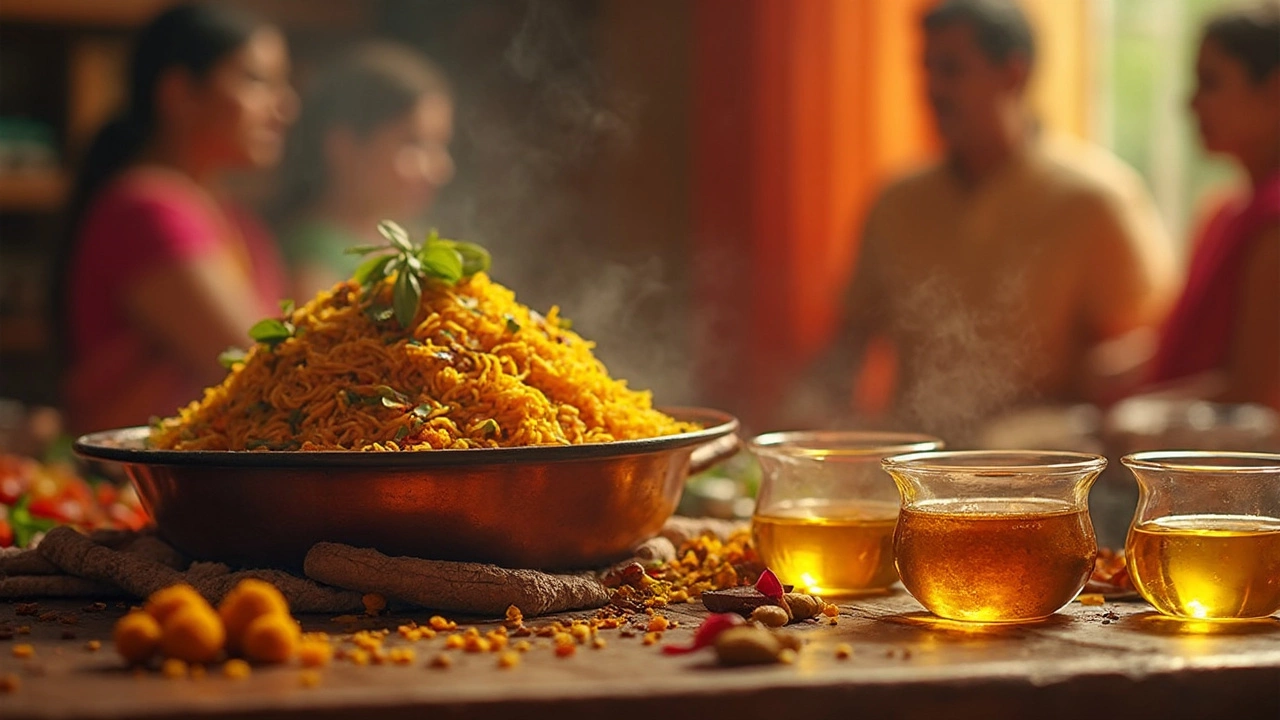Healthy Biryani: Light, Flavorful Recipes for Every Day
Want a biryani that tastes just as rich but won’t sabotage your diet? You can have both. By swapping a few ingredients and watching the oil, you get a bowl that’s satisfying, nutritious, and still full of those classic aromas.
Key Ingredients for a Lighter Biryani
Start with the rice. Brown basmati or red rice adds fiber and keeps the glycemic load lower than white rice. Rinse it well and soak for 20 minutes so it cooks evenly.
Protein can be lean chicken breast, turkey, tofu, or even lentils. Trim any skin or excess fat, and marinate with a splash of lemon, a pinch of salt, and your favorite biryani masala. The acid helps the meat stay juicy without extra butter.
Veggies are the secret weapon. Carrots, peas, beans, and cauliflower give color, crunch, and nutrients. Toss them in with a drizzle of olive oil or a spray of cooking spray instead of ghee.
Spices stay the same – cumin, coriander, cardamom, cloves, and bay leaf are non‑negotiable. Use whole spices for the first fry, then grind them into a paste with a little yoghurt or low‑fat coconut milk. This adds creaminess without the heavy cream.
Quick Healthy Biryani Recipes to Try Tonight
Veggie‑Loaded Brown Biryani: Cook 1 cup soaked brown rice until 70% done. In a pan, heat 1 tsp oil, add whole spices, then sauté onions, garlic, and ginger. Add chopped carrots, peas, and cauliflower. Stir in the spice paste, a cup of water, and the partially cooked rice. Cover and steam on low for 10 minutes. Finish with fresh cilantro.
Chicken Breast Biryani: Marinate 200 g chicken breast in yoghurt, turmeric, chili powder, and salt for 30 minutes. Sauté spices, then add the chicken and brown lightly. Add ¾ cup basmati rice, a cup low‑sodium broth, and a handful of sliced almonds for crunch. Cook covered until rice is fluffy.
Both dishes stay under 500 kcal per serving and give you protein, fiber, and the biryani flavor you love.
Tips to keep it healthy: use a non‑stick pan, limit oil to 1‑2 teaspoons, and finish with a squeeze of lemon for brightness. If you’re watching carbs, try cauliflower rice instead of grain – it’s light, low‑calorie, and still soaks up the spice mix.
Feel free to experiment. Swap in shrimp, paneer, or beans for variety. The core idea is simple: keep the spices bold, the rice light, and the added fats minimal. You’ll end up with a biryani that satisfies cravings and supports your health goals.
Which Oil Is Best for Biryani? Find Out What Really Works
Ever wondered which oil is actually best for biryani? This guide compares popular options like ghee, sunflower oil, and mustard oil, weighing their flavor, smoke points, and health factors. Learn how oil choices impact your biryani’s aroma, texture, and taste. Find tips to match the oil to your cooking style and dietary needs. Pick the perfect oil and make every biryani memorable.
